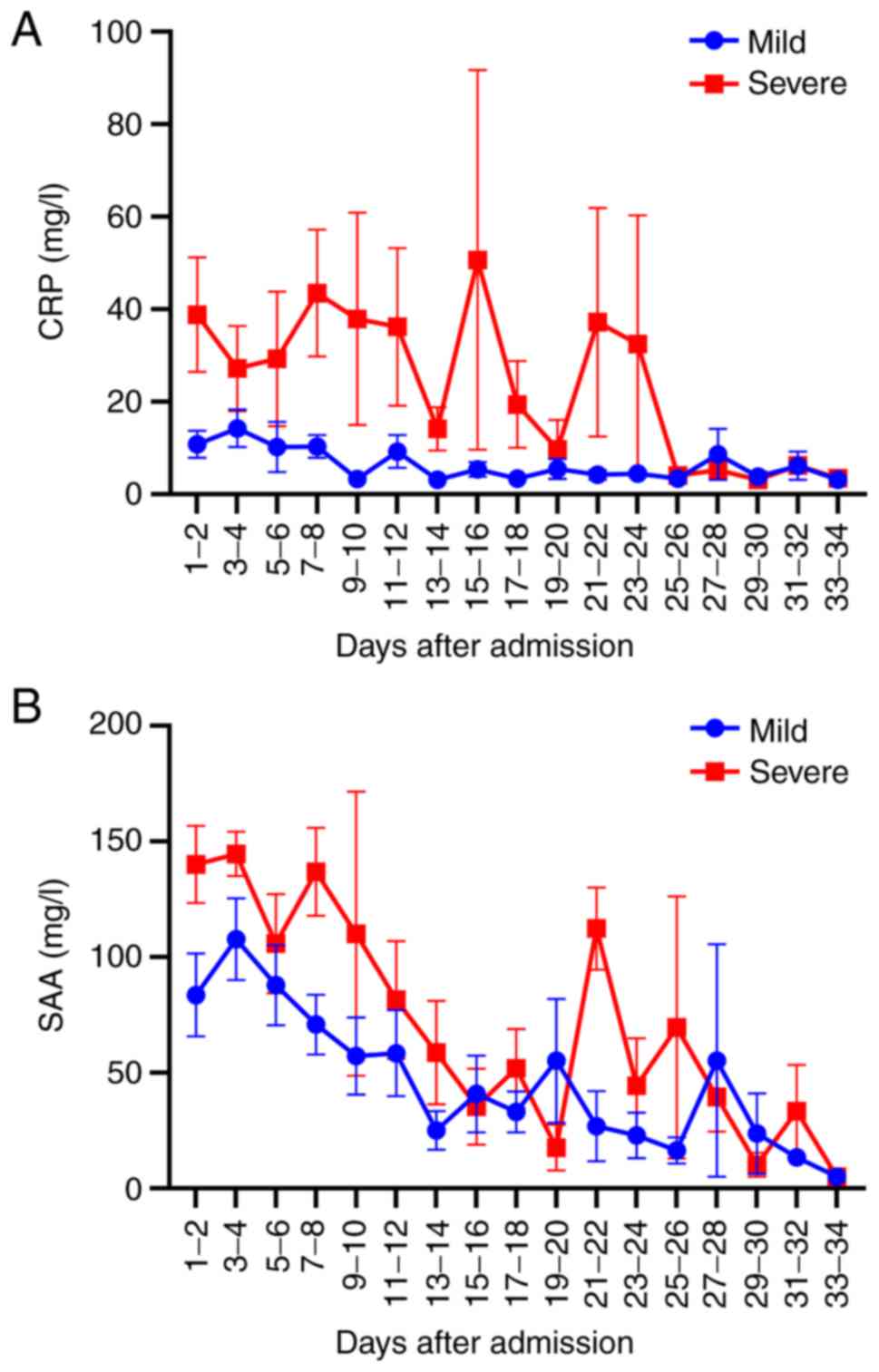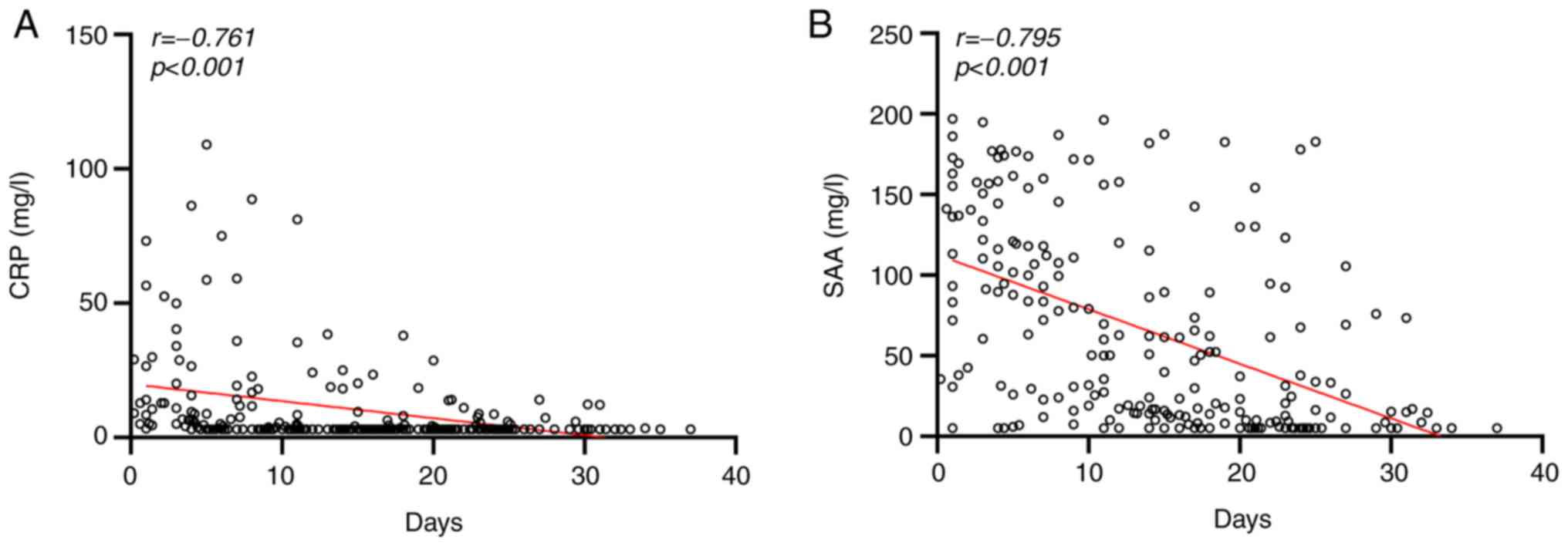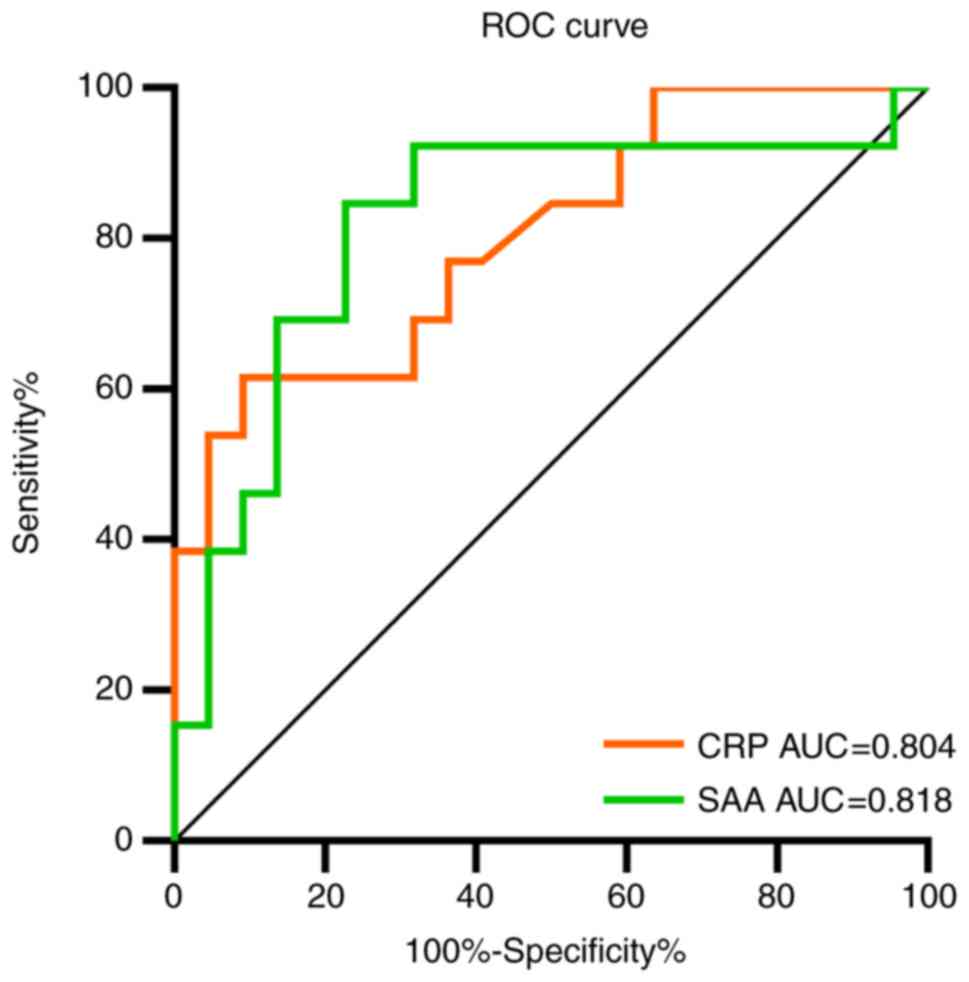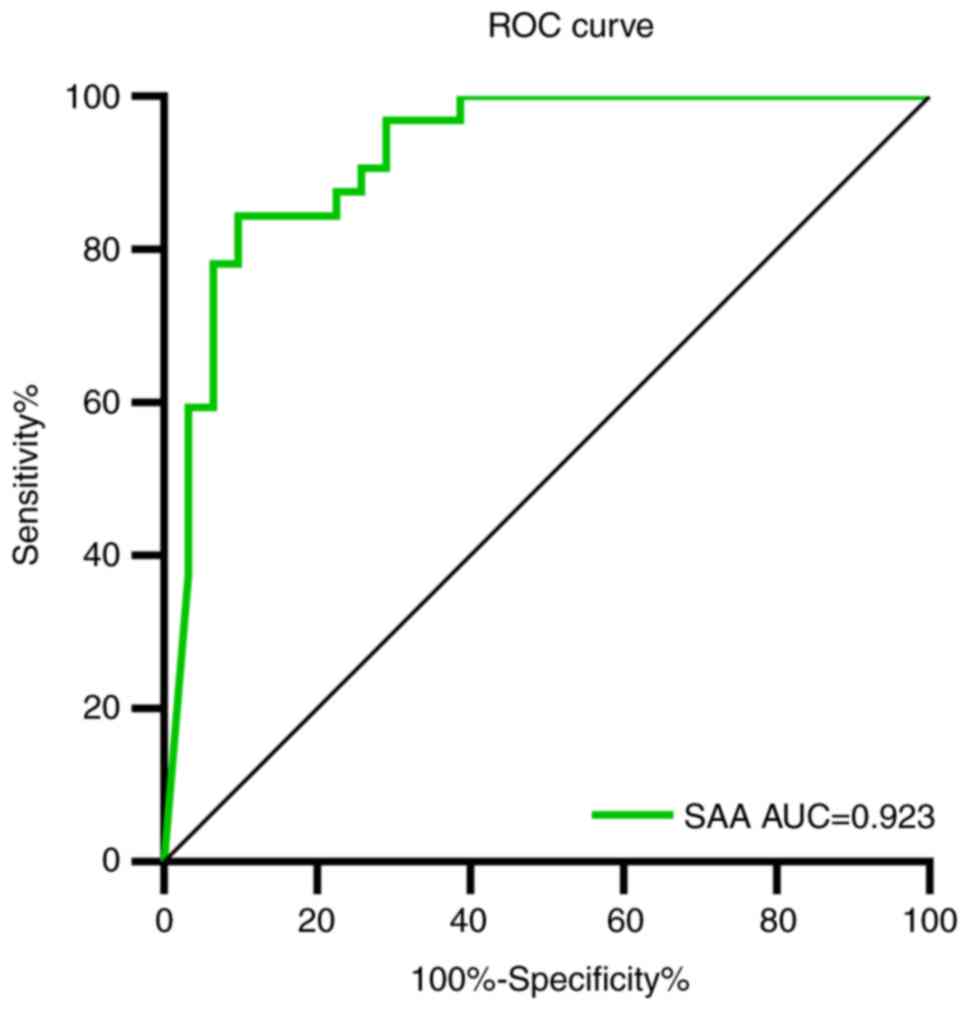|
1
|
Huang C, Wang Y, Li X, Ren L, Zhao J, Hu
Y, Zhang L, Fan G, Xu J, Gu X, et al: Clinical features of patients
infected with 2019 novel coronavirus in Wuhan, China. Lancet.
395:497–506. 2020.PubMed/NCBI View Article : Google Scholar
|
|
2
|
Zhu N, Zhang D, Wang W, Li X, Yang B, Song
J, Zhao X, Huang B, Shi W, Lu R, et al: A novel coronavirus from
patients with pneumonia in China, 2019. N Engl J Med. 382:727–733.
2020.PubMed/NCBI View Article : Google Scholar
|
|
3
|
World Health Organization: Statement on
the second meeting of the international health regulations (2005)
emergency committee regarding the outbreak of novel coronavirus
(2019-nCoV), 2020.
|
|
4
|
World Health Organization: Coronavirus
disease 2019 (COVID-19) situation report-74, 2020.
|
|
5
|
Calina D, Docea AO, Petrakis D, Egorov AM,
Ishmukhametov AA, Gabibov AG, Shtilman MI, Kostoff R, Carvalho F,
Vinceti M, et al: Towards effective COVID-19 vaccines: Updates,
perspectives and challenges (Review). Int J Mol Med. 46:3–16.
2020.PubMed/NCBI View Article : Google Scholar
|
|
6
|
Nitulescu GM, Paunescu H, Moschos SA,
Petrakis D, Nitulescu G, Ion GND, Spandidos DA, Nikolouzakis TK,
Drakoulis N and Tsatsakis A: Comprehensive analysis of drugs to
treat SARS-CoV-2 infection: Mechanistic insights into current
COVID-19 therapies (Review). Int J Mol Med. 46:467–488.
2020.PubMed/NCBI View Article : Google Scholar
|
|
7
|
Ye Q, Wang B and Mao J: The pathogenesis
and treatment of the ‘Cytokine Storm’ in COVID-19. J Infect.
80:607–613. 2020.PubMed/NCBI View Article : Google Scholar
|
|
8
|
Vietri L, Fui A, Bergantini L,
d'Alessandro M, Cameli P, Sestini P, Rottoli P and Bargagli E:
Serum amyloid A: A potential biomarker of lung disorders. Respir
Investig. 58:21–27. 2020.PubMed/NCBI View Article : Google Scholar
|
|
9
|
Yip TT, Chan JW, Cho WC, Yip TT, Wang Z,
Kwan TL, Law SC, Tsang DN, Chan JK, Lee KC, et al: Protein chip
array profiling analysis in patients with severe acute respiratory
syndrome identified serum amyloid a protein as a biomarker
potentially useful in monitoring the extent of pneumonia. Clin
Chem. 51:47–55. 2005.PubMed/NCBI View Article : Google Scholar
|
|
10
|
World Health Organization: Clinical
management of severe acute respiratory infection (SARI) when
COVID-19 disease is suspected: Interim guidance, 13 March 2020,
2020.
|
|
11
|
Livak KJ and Schmittgen TD: Analysis of
relative gene expression data using real-time quantitative PCR and
the 2(-Delta Delta C(T)) method. Methods. 25:402–408.
2001.PubMed/NCBI View Article : Google Scholar
|
|
12
|
Hajian-Tilaki K: The choice of methods in
determining the optimal cut-off value for quantitative diagnostic
test evaluation. Stat Methods Med Res. 27:2374–2383.
2018.PubMed/NCBI View Article : Google Scholar
|
|
13
|
Li K, Wu J, Wu F, Guo D, Chen L, Fang Z
and Li C: The clinical and chest CT features associated with severe
and critical COVID-19 pneumonia. Invest Radiol. 55:327–331.
2020.PubMed/NCBI View Article : Google Scholar
|
|
14
|
Wang Z, Yang B, Li Q, Wen L and Zhang R:
Clinical features of 69 cases with coronavirus disease 2019 in
Wuhan, China. Clin Infect Dis. 71:769–777. 2020.PubMed/NCBI View Article : Google Scholar
|
|
15
|
Wu C, Chen X, Cai Y, Xia J, Zhou X, Xu S,
Huang H, Zhang L, Zhou X, Du C, et al: Risk factors associated with
acute respiratory distress syndrome and death in patients with
coronavirus disease 2019 pneumonia in Wuhan, China. JAMA Intern Med
180: 1-11, Mar 13, 2020 (Online ahead of print).
|
|
16
|
Yang X, Yu Y, Xu J, Shu H, Xia J, Liu H,
Wu Y, Zhang L, Yu Z, Fang M, et al: Clinical course and outcomes of
critically ill patients with SARS-CoV-2 pneumonia in Wuhan, China:
A single-centered, retrospective, observational study. Lancet
Respir Med. 8:475–481. 2020.PubMed/NCBI View Article : Google Scholar
|
|
17
|
Zhou F, Yu T, Du R, Fan G, Liu Y, Liu Z,
Xiang J, Wang Y, Song B, Gu X, et al: Clinical course and risk
factors for mortality of adult inpatients with COVID-19 in Wuhan,
China: A retrospective cohort study. Lancet. 395:1054–1062.
2020.PubMed/NCBI View Article : Google Scholar
|
|
18
|
Wang D, Hu B, Hu C, Zhu F, Liu X, Zhang J,
Wang B, Xiang H, Cheng Z, Xiong Y, et al: Clinical characteristics
of 138 hospitalized patients with 2019 novel coronavirus-infected
pneumonia in Wuhan, China. JAMA. 323:1061–1069. 2020.PubMed/NCBI View Article : Google Scholar
|
|
19
|
Yu P, Zhu J, Zhang Z, Han Y and Huang L: A
familial cluster of infection associated with the 2019 novel
coronavirus indicating potential person-to-person transmission
during the incubation period. J Infect Dis, Feb 18, 2020 (Online
ahead of print).
|
|
20
|
de Wit E, van Doremalen N, Falzarano D and
Munster VJ: SARS and MERS: Recent insights into emerging
coronaviruses. Nat Rev Microbiol. 14:523–534. 2016.PubMed/NCBI View Article : Google Scholar
|
|
21
|
Gao Y, Li T, Han M, Li X, Wu D, Xu Y, Zhu
Y, Liu Y, Wang X and Wang L: Diagnostic utility of clinical
laboratory data determinations for patients with the severe
COVID-19. J Med Virol. 92:791–796. 2020.PubMed/NCBI View Article : Google Scholar
|
|
22
|
Chan JF, Yuan S, Kok KH, To KK, Chu H,
Yang J, Xing F, Liu J, Yip CC, Poon RW, et al: A familial cluster
of pneumonia associated with the 2019 novel coronavirus indicating
person-to-person transmission: A study of a family cluster. Lancet.
395:514–523. 2020.PubMed/NCBI View Article : Google Scholar
|
|
23
|
Forstmeier W, Wagenmakers EJ and Parker
TH: Detecting and avoiding likely false-positive findings-a
practical guide. Biol Rev Camb Philos Soc. 92:1941–1968.
2017.PubMed/NCBI View Article : Google Scholar
|


















